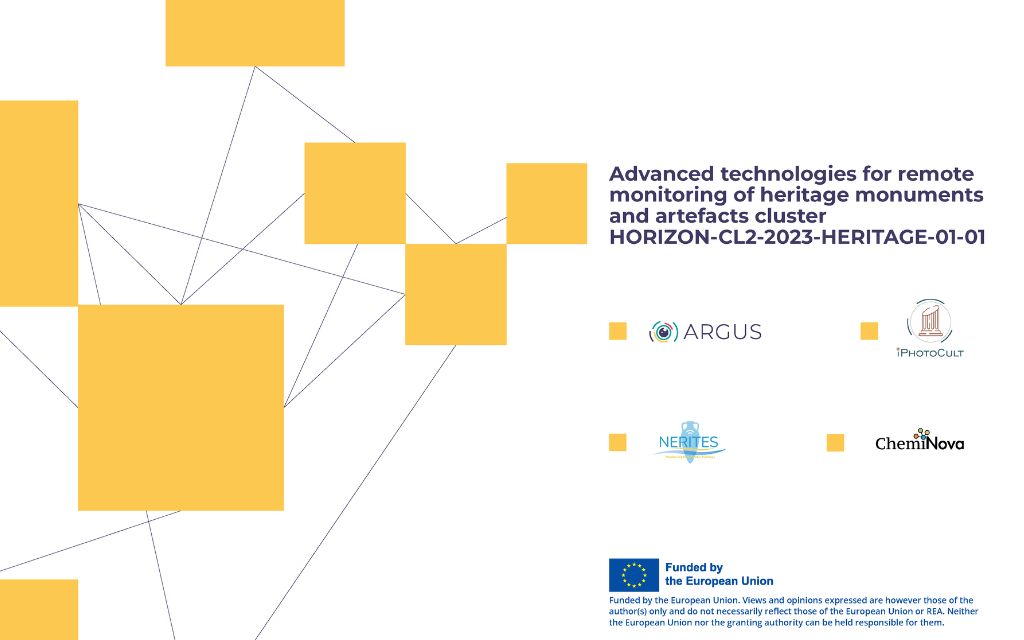Strengthening heritage preservation through collaborative innovation: EU-Funded projects lead the way

Cultural heritage monuments and artefacts are invaluable links to our shared past, yet they face growing threats from natural disasters, environmental changes, and human activities.
Recognizing this, the European Union has prioritized the development of advanced remote technologies to safeguard these treasures under the Horizon Europe initiative, specifically through the call HORIZON-CL2-2023-HERITAGE-01-01. This program seeks innovative, non-destructive solutions for monitoring and preserving cultural heritage, addressing challenges like pollutant analysis, structural integrity, and data accessibility. Collaboration is key to tackling such a multifaceted challenge. Projects funded under this call are bringing together interdisciplinary teams of scientists, engineers, cultural heritage experts, and policymakers. These collaborations emphasize synergies in research, pooling knowledge and resources to maximize impact.
ARGUS, NERITES, ChemiNova and iPhotoCult are EU funded projects which started collaborating to deliver impactful results about cultural heritage preservation in remote areas.
Taking the lead in remote heritage protection
Several EU-funded projects are taking the lead in developing transportable, cost-effective equipment for in-situ analysis of pollutants and degradation products on cultural artefacts. For instance:
- Remote sensing technologies: Projects are creating innovative tools like fibre optic sensors and interferometric techniques for assessing structural and chemical integrity. These tools can remotely monitor inaccessible or fragile artefacts, minimizing the risks associated with handling.
- Chemical mapping innovations: Teams are advancing chemical probes capable of providing detailed mappings of pollutants and residue from past restoration efforts. Such capabilities are crucial for understanding degradation patterns and planning targeted interventions.
- Embedded monitoring systems: Some projects are integrating sensors within heritage structures to enable real-time monitoring of conditions such as vibrations, moisture levels, and pollutant exposure. These systems provide early warnings, allowing for proactive conservation.
Collaborating beyond technology development for cultural heritage preservation
Collaboration extends beyond technology development. Projects are partnering with museums, local governments, and cultural organizations to ensure solutions are aligned with real-world needs. This participatory approach ensures that new technologies are not only innovative but also practical and widely applicable. For example, shared workshops and networking events between projects facilitate the exchange of best practices and lessons learned. Teams can test prototypes on diverse heritage sites, from urban landmarks to remote archaeological ruins, enhancing the adaptability of their technologies.
The collaborative efforts under this funding scheme are expected to deliver groundbreaking results, including:
- Comprehensive toolkits for on-site analysis and monitoring.
- Comprehensive toolkits for on-site analysis and monitoring.
- Advanced sensor networks for remote and real-time data collection.
- Interdisciplinary training for conservationists and stakeholders in the use of novel technologies.
These innovations will empower heritage professionals to make informed decisions, prolonging the life of cultural artefacts and monuments while reducing intervention costs.
Looking ahead for impactful results on the future of digital humanities
ARGUS, NERITES, ChemiNova and iPhotoCult initiatives exemplifies the EU’s commitment to protecting cultural heritage through science and innovation. By fostering collaboration across projects and disciplines, it ensures that the most pressing challenges in heritage preservation are met with robust, sustainable, and cutting-edge solutions. As these projects progress, their collective work will not only protect history but also create a roadmap for future preservation efforts globally, blending tradition with technology to safeguard the past for generations to come.